Krft sculpts "bulging" form for Brighton College arts centre
A combination of grey brick and flint clads the sculptural exterior of this performing arts centre, which Dutch studio Krft has created for a college in Brighton, UK.
The project replaces a series of ad-hoc extensions to Brighton College's main building – an adjacent neogothic structure that was completed by architect Gilbert Scott in 1849.
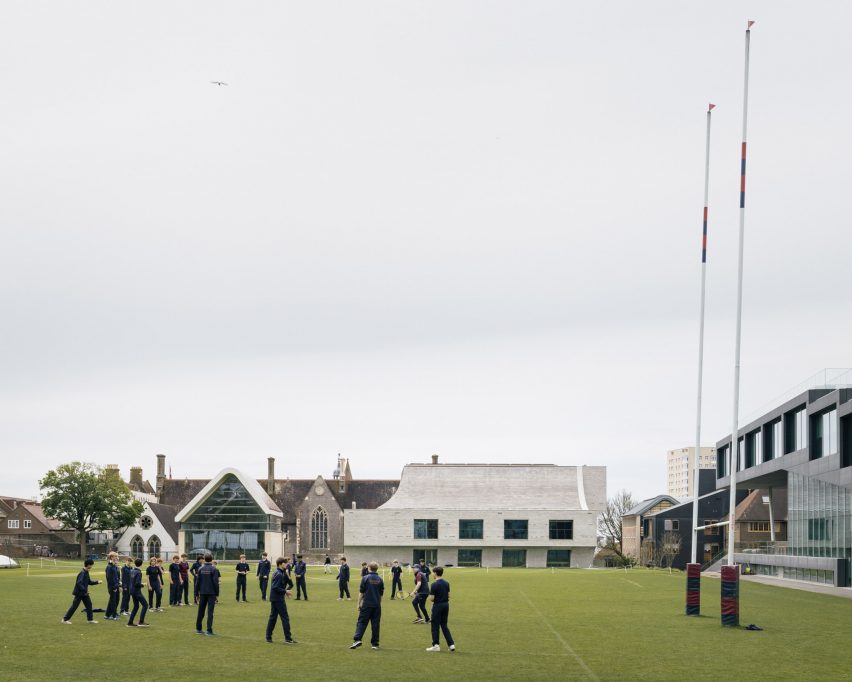
Its sculptural, four-storey form is organised around an atrium and echoes the layout of the spaces inside, including a 400-seat theatre on its upper levels.
Krft designed this with supporting local architect NHA to maximise useable space without filling the compact plot, while also evoking the building's use as a home for dance, drama and music.

"By bulging out, the program fits loosely in the envelope allowing a gracious canyon with an abundance of daylight connecting all the spaces over four levels," studio founders Thomas Dieben and Oscar Vos told Dezeen.
"By curving the facade into a solid, dynamic mass, it refers to a dancing movement," they added.
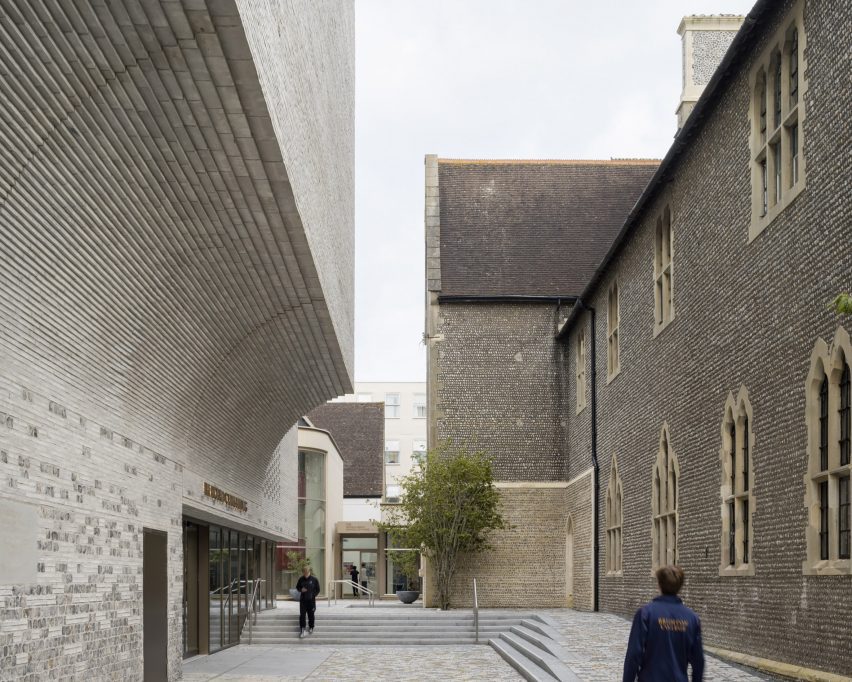
Brighton College's performing arts centre forms part of a wider masterplan to revamp the campus, for which OMA created the School for Science and Sports and Eric Parry Architects has created the Music School.
It combines all of the college's performing arts departments in a single building and provides them with a shared theatre. This 400-seat venue also functions as the main hall for the college.
Krft was commissioned for the project by Brighton College headmaster Richard Cairns after he had seen a theatre on Dezeen designed by the studio in the Dutch town of Laren.
"I actually found our next architect on your site," Cairns told Dezeen during a tour of the School of Science and Sports in 2020. "I saw a theatre that they designed in Holland, contacted them and then went to see it. Now they are designing our theatre."

Alongside the theatre are classrooms for the dance, drama and music departments and social spaces including a cafe and lounge. In the atrium, a wide staircase can also be used as a lunch hangout area, theatre foyer or rehearsal space.
As the theatre occupies the upper levels of the building, the social spaces are on the lower levels to help open up the interior and connect it to the wider campus.
"It's a bold move for theatre design, where a theatre is a machine, revolving around effective logistics, but it's a necessity for a school building, on a campus that is all about social interaction," said Dieben and Vos.
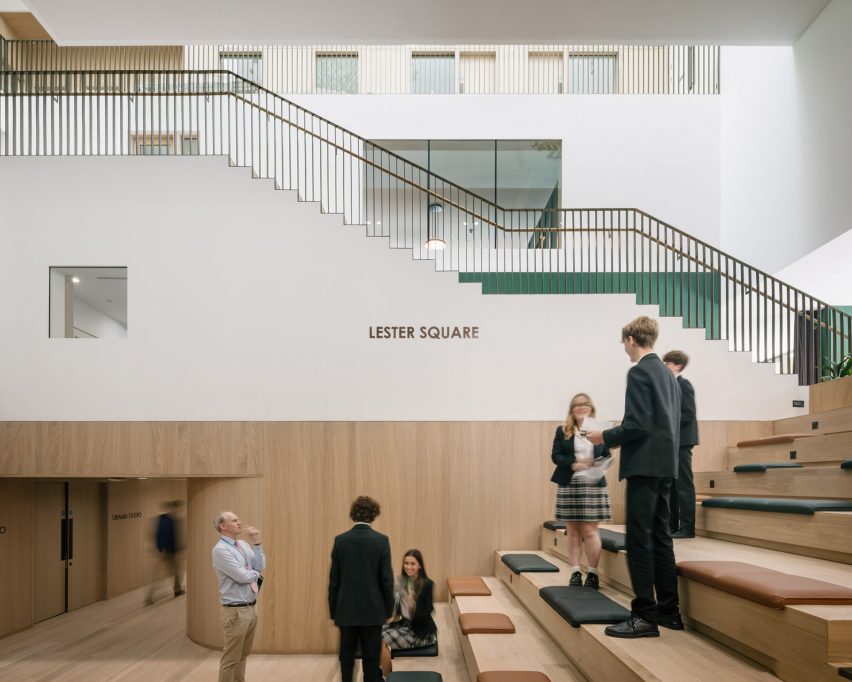
The grey-toned cladding on the exterior is formed of a mix of grey brick and flint.
According to Krft, these cladding materials were chosen in homage to neogothic flint buildings on the campus, while also nodding to and withstanding the city's coastal conditions.
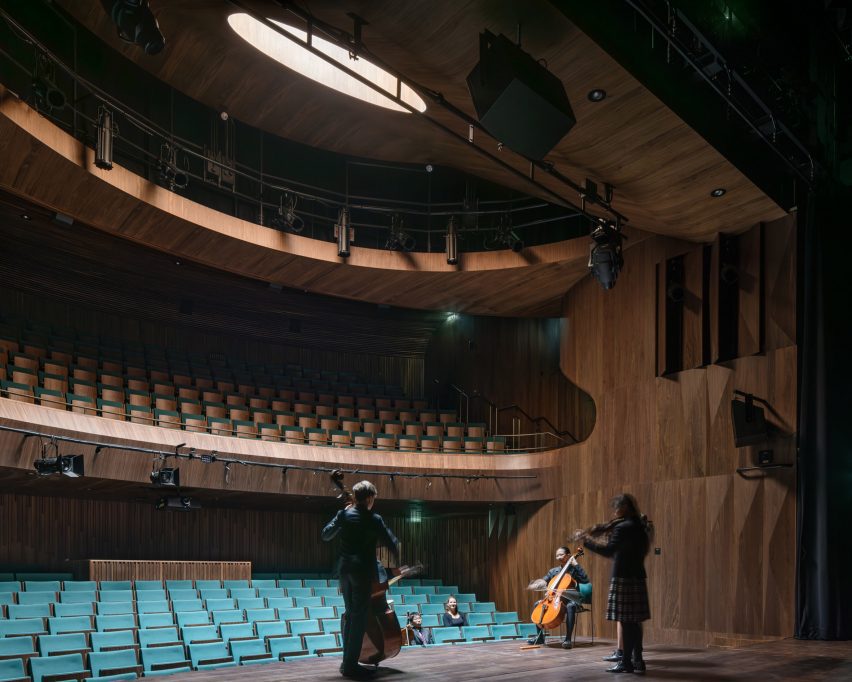
"The choice of brickwork combined with flint gave us both the robustness to withstand the coastal climate, but also brought in regional building traditions," explained Dieben and Vos.
"The brick colour has been developed to incorporate all shades of grey present in the surrounding flint work and to incorporate future weathering in the colour palette," they continued.
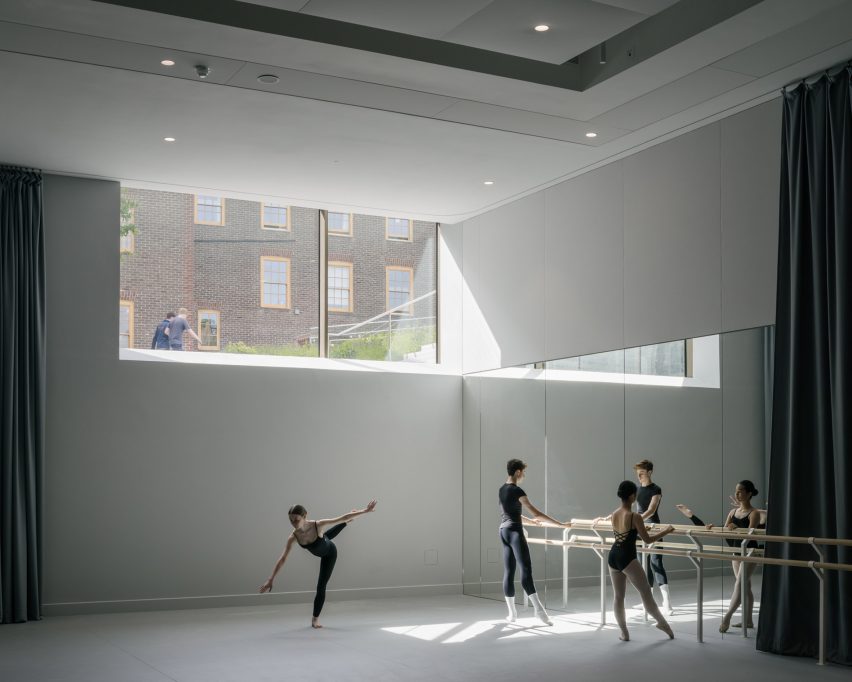
"The way the flint is integrated as a horizontal gradient in the brickwork is inspired by the white cliffs of the southern Sussex coast where the flint finds its origin in the chalk sediment," added Dieben and Vos.
Inside, the classrooms are arranged along the north elevation, overlooking the sports field through large windows. Above, the theatre was designed to be compact, with its balconies positioned to project out over a path through the campus.
In contrast to the cool, grey exterior, the interior is dominated by warm timber finishings, including dark walnut in the theatre and a light European oak across the other spaces.
As part of the project, Krft collaborated with students from Brighton College in the early design stages to develop the material palette and conduct interior design research.
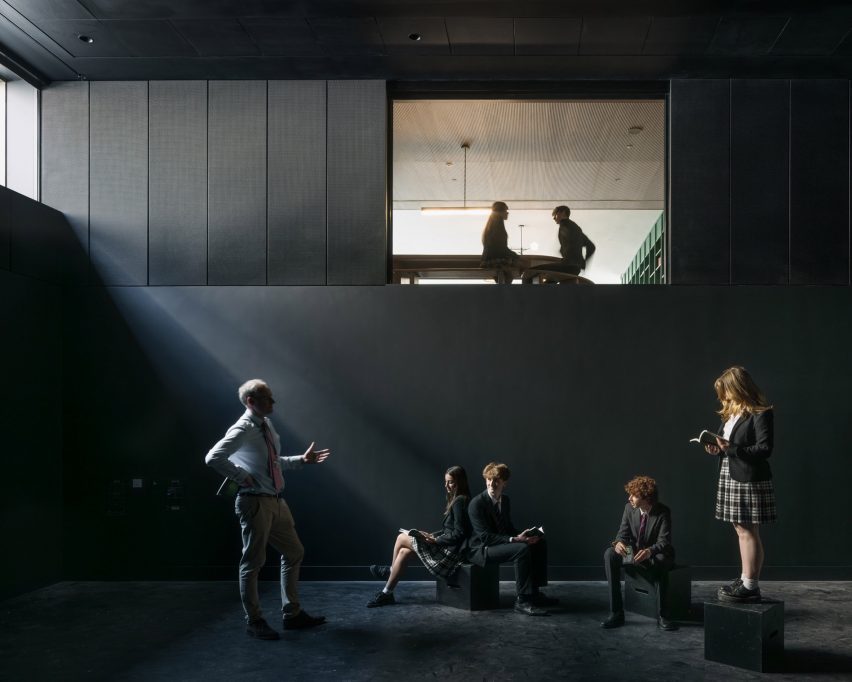
"The impact of a new building on your school, radically changing your daily environment, is not to be underestimated," said Dieben and Vos.
"When some pupils showed a more extended interest, they joined our team in Amsterdam to work on the project, working on material and interior design research," they explained.
"They have since then been ambassadors of the new building, giving regular tours on site and are even considering a future in architecture after school."
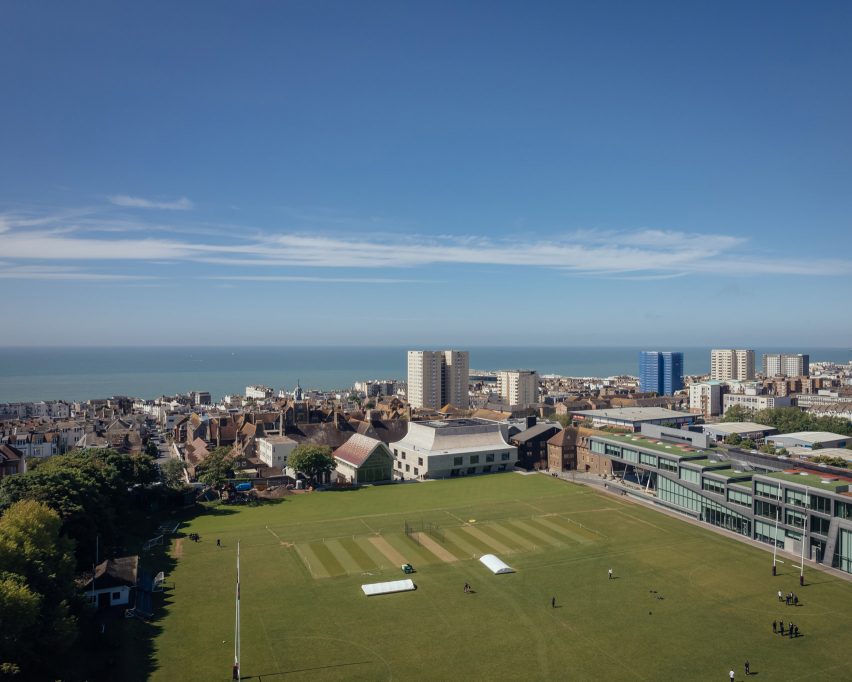
Similarly to other buildings in the Brighton College masterplan, the centre is designed to meet BREEAM Excellent sustainability rating – the second highest level of the certification system. It incorporates passive design strategies and has a rooftop solar array.
Other recently completed buildings for education include a law school in Sydney organised around a timber-framed atrium and a modular study pavilion for a German university.
The video is by Jim Stephenson and the photography is by Stijn Bollaert unless stated otherwise.